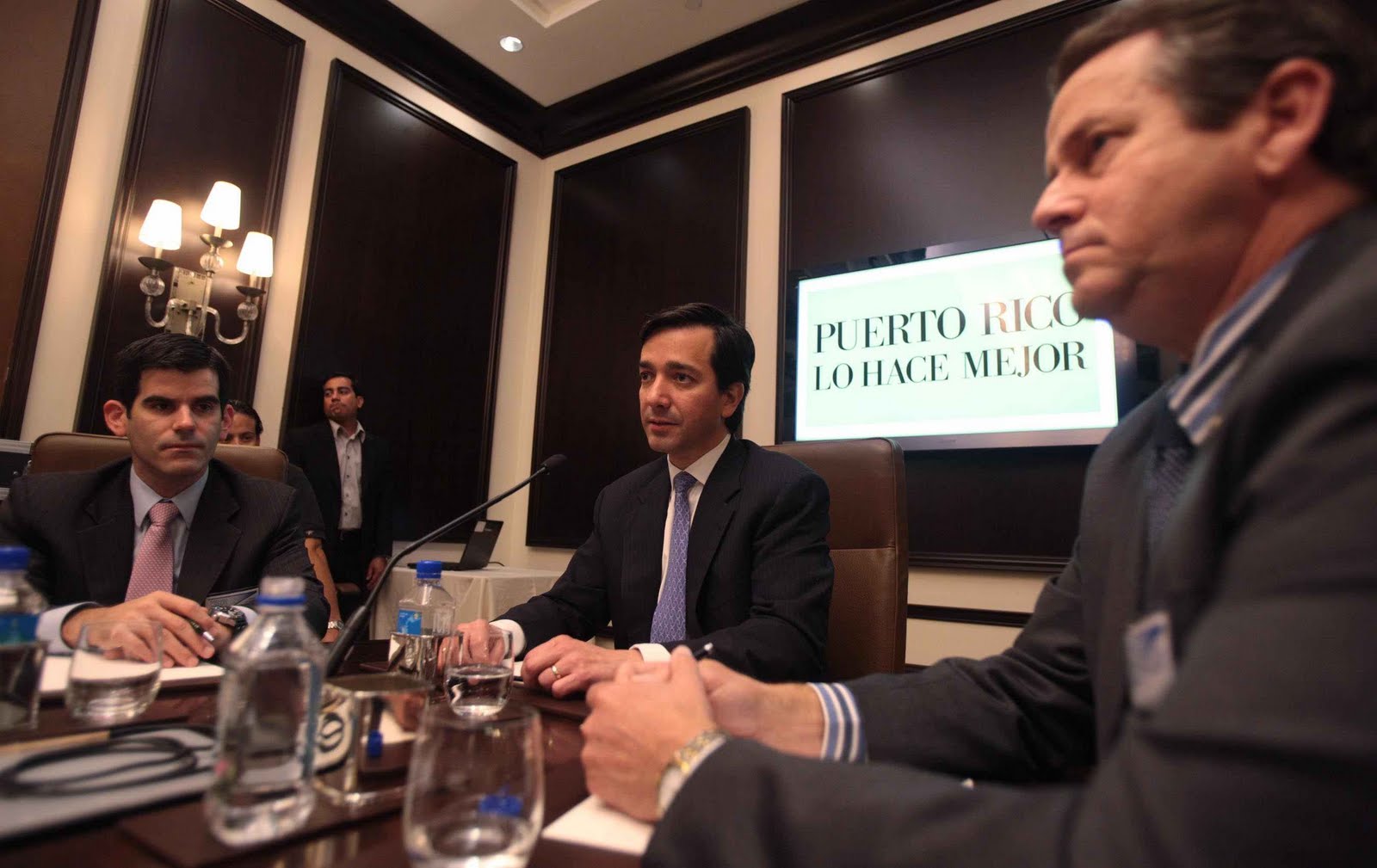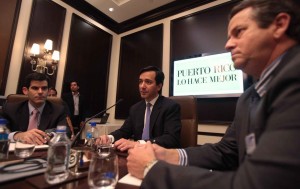Government: ‘Pro-growth’ economic policy should yield positive results in ’12

 The government’s economic team, headed by Gov. Luis Fortuño, told Puerto Rico investors on Friday that while the island’s economy will not see growth until 2012, it is on an improvement track.
The government’s economic team, headed by Gov. Luis Fortuño, told Puerto Rico investors on Friday that while the island’s economy will not see growth until 2012, it is on an improvement track.
During the 2011 Puerto Rico Credit Conference, Fortuño spoke of the measures taken to reduce the fiscal deficit, which he said is now at 10.9 percent, from 43.6 percent in 2009.
The deficit has been reduced year-over-year since fiscal 2009, when it stood at $3.3 billion, to the current $1 billion, according to the numbers provided at the conference.
“Now, we have seen that 30 U.S. jurisdictions have a higher budget deficit than Puerto Rico. This is the first example of how we’ve balanced our budget and will continue balancing it in the next two years to move Puerto Rico forward,” said Fortuño. Despite the implementation of what they called a “pro-growth” tax policy, Fortuño administration officials admitted that the economy will still show 1 percent negative growth in 2011. While that projection is significantly less than the 3.8 percent negative growth in 2010, it will undoubtedly hinge upon the effects of ever-increasing oil prices.
“This year’s conference takes place at a promising new juncture for Puerto Rico … a juncture at which the fiscal reforms we’ve implemented have not only stabilized our government finances but are now being considered a roadmap for other states and countries to follow,” Fortuño said during his address to more than 250 investors, credit analysts, and local and stateside financial industry professionals gathered at the St. Regis Bahía Beach Resort in Río Grande.
Modest growth, bigger budget for fiscal ’12
The estimated growth in 2012 is of 0.4 percent, said former Government Development Bank President Carlos García during a presentation in which he reviewed the measures taken to improve the island’s deteriorated economic conditions over the past two years, when he played a key role in Fortuño’s economic team.
Reducing public spending through pay cuts and the elimination of 21,000 jobs, as well as implementing new temporary taxes — such as the excise tax on foreign corporation — anchored that strategy.
According to the Office of Management and Budget, the Fortuño administration has reduced public spending by $1.7 billion since 2009, with the most significant reduction being in government payroll.
OMB Executive Director Juan Carlos Pavía said central government payroll expenses will be about $4.6 billion this year, reflecting a 16 percent drop from the $5.5 billion in 2009. “The government has created a path of prudence, discipline and efficiency in the past two years by reducing budget expenses,” Pavía said.
However, he noted that the fiscal 2012 budget, which kicks in July 1, is increased from $9.2 billion to $9.3 billion because the local government will have to replace money that will no longer be available through the American Recovery and Reinvestment Act.
For the past two years, the local government has floated a number of infrastructure, education, security and other programs with federal money. That influx of funding is partly responsible for the positive numbers now being seen. “Fiscal 2012’s recommended budget deficit is expected to decrease by no less than 30 percent,” Pavía said.
Tackling pension fund woes
During his turn to speak, newly appointed GDB President Juan Carlos Batlle said one of the most pressing issues pending is improving the funding ratio of the government employees retirement system, to extend its assets through the year 2025.
At present, the system that covers thousands of participating public employees, teachers and members of the judiciary branch, is dealing with a $24 billion funding shortage and the looming threat of insolvency in the next 10 years.
To address the problem, Batlle said this year’s budget includes a two-pronged initiative to improve the retirement system’s liquidity through increased employer contributions by 1 percent over the next five years, and segregating the system’s assets among the central government, municipalities and public corporations.
“A laddered increase in the employer contribution rate will provide significant funding improvement,” he said, noting that the higher employer contributions have been factored into the budget.
Other measures, such as increasing employee contributions, limiting the approval of personal loans through the system, and capping pensions would also be considered as ways to address the retirement fund’s issues, he noted.












